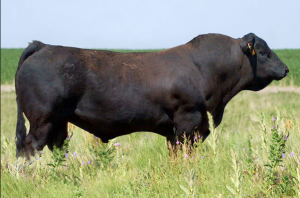 The spring season brings the promise of warm, sunny days as summer slowly arrives. Unfortunately, it can also bring a host of unwelcome health problems for cattle.
The spring season brings the promise of warm, sunny days as summer slowly arrives. Unfortunately, it can also bring a host of unwelcome health problems for cattle.
Spring weather can often vary from day to day, with one day being warm and sunny while the next day may be cold and rainy – or even snowing. These abrupt weather changes can be frustrating enough for humans who have the luxury of retreating into a heated and weatherproof house, but these changes can be dangerous for cattle. Spring weather may weaken an animal’s immune system leaving it vulnerable to several diseases. Let’s take a look at the major problems to keep an eye out for this spring season with insights from Beef Magazine.
Bovine Respiratory Disease
Bovine respiratory disease is one common ailment that can afflict cattle in the spring. Preventative antibiotic treatments can help to avoid a larger problem, and is particularly useful for calves when the weather has been bad or will be bad in coming days. Treating all of your cattle simultaneously is also vital to prevent the disease from spreading if there’s any signs found in your calves, bulls or other livestock animals.
Foot Rot
Foot rot can readily occur during chronically wet weather – often exactly the conditions of spring. Once the infection starts it can spread to other cattle in the same area, possibly plaguing your herd for months after the outbreak begins. Avoiding injuries to feet, as well as keeping cattle away from chronically wet areas, is the best prevention for foot rot. Since this is not always possible, use of a vaccine may be considered, as may supplements of chlortetracycline, zinc and iodine to improve immunity. Foot baths can also be helpful in preventing foot rot.
Coccidiosis
Coccidiosis is another disease that is commonly seen in the spring. Since coccidia attack the gut in affected cattle, feeding and weight gain are both affected for as long as three months. This can be costly for producers, especially as severe infections can lead to cattle death. Using a coccidiostat during spring stress can help to avoid the problem.
Taking steps to prevent spring cattle ailments is always more effective and cheaper than trying to manage an outbreak after the fact – or, as the saying goes, an ounce of prevention is worth a pound of cure. Costly and lengthy treatments and lost revenue from slowed growth or even cattle death is the last thing any farmer or rancher wants, and keeping a vigilant eye out for these problems is the best way to ensure the health of your animals.
Of course, it also is a good idea to start with genetically superior cattle. Flying H Genetics provides premium animals that deliver the greatest benefits to our customers. Browse our website to see our available herd bulls or call us today at 308-962-6500 to learn how Flying H Genetics can help your operation.



